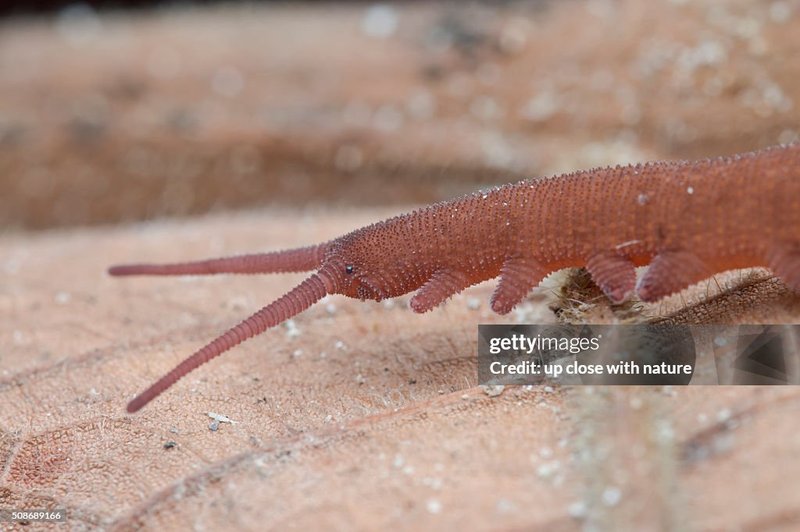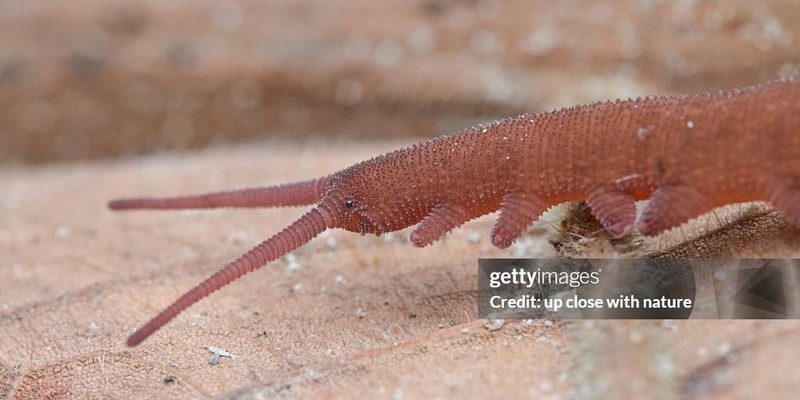
Imagine them like tiny, soft, living links between insects and annelids, but they’re all about keeping their skin moist to function. Think about how humans sweat to cool down. Velvet worms need moisture to thrive, too, but can they adapt to survive when the landscape dries out? Let’s dive into the world of these unique creatures and explore whether they can call dry climates home.
Understanding Velvet Worms: What Are They?
Velvet worms are fascinating little creatures that belong to a group of invertebrates. They look sort of like a cross between a caterpillar and a slug—squishy, with a soft body covered in a velvety texture. One of the coolest things about them is their slime. Yes, you heard that right! Velvet worms can shoot out a sticky thread-like slime to catch prey, which makes them quite the hunters.
These creatures are mainly found in humid environments. They prefer dark, damp locations like leaf litter or under stones where humidity levels are higher. This preference helps them keep their skin moist, which is crucial for their survival. Without moisture, they can become dehydrated quickly. So, you might be wondering, what happens if they find themselves in a drier setting?
Adaptation to Environment: Can They Adjust?
Here’s the thing: many organisms have adapted to thrive in various environments, and velvet worms are no exception, to an extent. While they’re primarily moisture-dependent, some species can show surprising resilience. They have certain adaptations that help them retain moisture, such as a slimy exterior that can slow down water loss.
That said, these adaptations still have limits. If a velvet worm is exposed to arid conditions for too long, it will struggle. Think of it like a fish out of water; it can hold its breath for a while, but eventually, it needs to get back to its comfortable environment. Similarly, for velvet worms, prolonged exposure to dryness isn’t ideal.
The Impact of Dry Climates on Velvet Worms
Dry climates pose a genuine threat to velvet worms. The lack of moisture can lead to dehydration, which is like facing a desert without the ability to find water. Once dehydrated, their bodies can’t function properly, impacting their movement, hunting abilities, and overall survival.
In these dry environments, temperature fluctuations can also be extreme. Velvet worms thrive in stable conditions, and when temperatures soar during the day and plunge at night, they face additional stress. Just think of those hot summer days when you might feel exhausted and cranky. For velvet worms, fluctuating temperatures mean finding shelter becomes crucial—something they can struggle with in arid landscapes.
Research Insights: Studies on Velvet Worm Survival
Researchers have looked into whether velvet worms can survive in drier habitats. Some studies suggest that while they’re not designed for dry conditions, certain species can manage in the short term. Observations show that when given a chance to burrow into moist soil or leaf litter, they can recover from dehydration.
This ability is critical because it hints that velvet worms might adapt to short periods without moisture. It’s like knowing when to retreat to the shade on a hot day. However, ongoing exposure to dry conditions is a different story. For the long-term survival of these creatures, a healthy amount of moisture remains essential.
Habitat and Distribution: Where Velvet Worms Live
Velvet worms primarily inhabit tropical and subtropical regions. They thrive in the moist, shadowy corners of forests from Central America to parts of Africa, Australia, and even New Zealand. You might find them nestled under decaying logs or buried in leaf litter, where humidity levels are naturally higher.
In contrast, dry climates are typically characterized by sparse vegetation and fewer moisture sources. This environment is less suitable for velvet worms, making their presence rare in these areas. If you’re on a quest to find them, think lush jungles rather than arid deserts!
Can Velvet Worms Be Found in Urban Areas?
Interestingly, urban environments can sometimes mimic the humidity levels that velvet worms need. You might find them in gardens, parks, or even basements with adequate moisture. Urban areas that maintain greenery can offer these creatures a glimpse of their natural habitat, providing some refuge from drier conditions.
However, the challenge lies in human activity. Pollution, habitat destruction, and changing landscapes can disrupt their delicate balance. While velvet worms might adapt temporarily to urban environments, they still rely on natural moisture sources.
Conservation: Protecting Velvet Worms
Given their specific habitat needs, velvet worms face several threats from habitat destruction and climate change. As our world gets warmer and drier, the natural moisture these creatures need is at risk. Conservation efforts focus on preserving their habitats and ensuring that moisture levels remain stable.
Creating parks and protected areas can help maintain the lush environments where these creatures can thrive. Every little effort counts—helping to combat climate change and preserve natural habitats can give velvet worms a fighting chance.
So, can velvet worms survive in dry climates? While they have some adaptability, they’re not built for sustained dryness. Their survival hinges on moisture, and prolonged arid conditions can spell trouble. It’s crucial to appreciate these unique creatures and understand their environment’s role in their survival.
As we look toward the future, preserving natural habitats will be key to ensuring velvet worms can continue to thrive, whether in the lush rainforests or the occasional moist urban corners. Ultimately, keeping an eye on our planet and its diverse ecosystems benefits not just velvet worms, but all of us!

